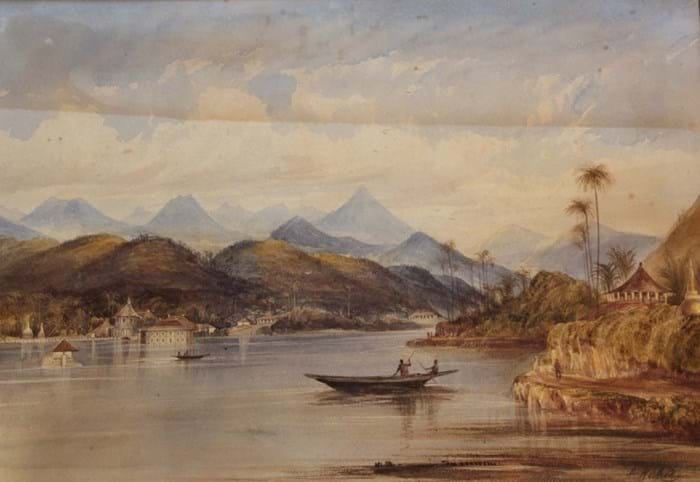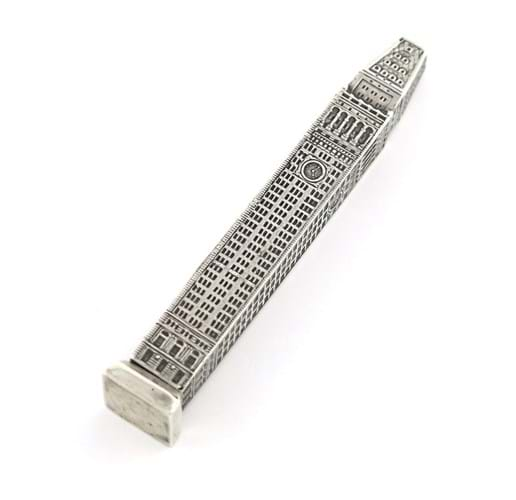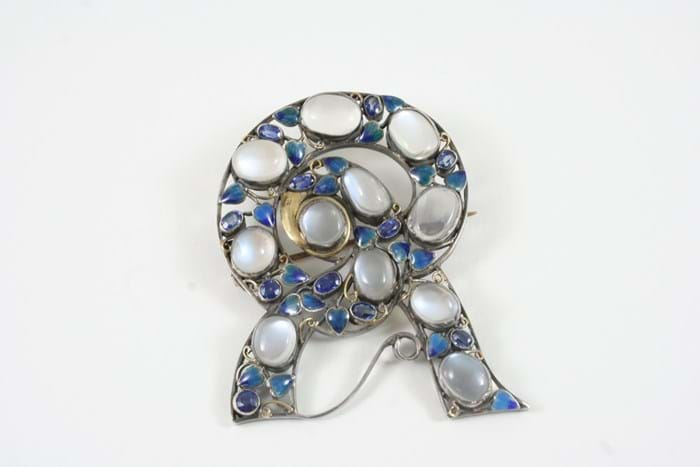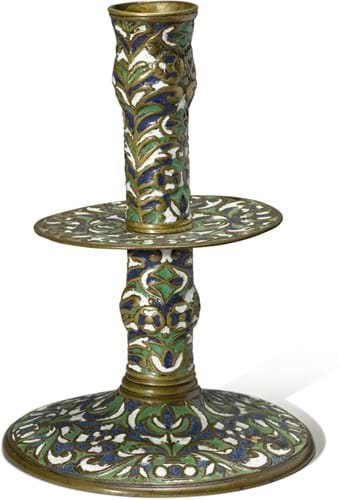1. A Ceylon landscape
This 13 x 20in (33 x 49cm) watercolour and pencil by Andrew Nicholl (1804-86) is inscribed with title verso Lake and temples of Kandy. At Lawrences of Crewkerne on January 18, it sold at £7600. The winning bidder, using thesaleroom.com, paid more than ten times the top estimate.
Nicholl was from Belfast, and a founding member of the Belfast Association of Artists, but in 1849 was sent by the Government to work as an art teacher at the Colombo Academy (Sri Lanka). He made friends with the colonial secretary there, Sir James Emerson Tennent (1804-69), a fellow Belfast man, and was commissioned by him to produce many scenes for his book Ceylon: An Account of the Island - Physical, Historical and Topographical, published in 1860. In 1870 he offered two watercolours of views of Ceylon to Queen Victoria, who bought two of them.
2. A Tiffany pencil
On January 22 Woolley & Wallis of Salisbury sold the extensive pencil collection of Bond Street silver dealer Kenneth Bull. Amassed across decades and dubbed ‘The KB Collection’, it is perhaps the most comprehensive collection of its type to come onto the open market. The 464-lot collection showed the progression of pencils from the 1820s until the 1950s with many made in silver by London firm Sampson Mordan.
This American novelty silver pencil by Tiffany, modelled as the Art Deco skyscraper in Manhattan formally titled the Metropolitan Life Insurance Company Tower, but better known as the Met Life Tower, was guided at £1000-1500 but sold at £2200. Leading the sale at £7200 (estimate £1500-200) was a gold and enamel quill-form pencil by Cartier that came in its fitted case.
3. An Arts and Crafts brooch
This Arts and Crafts brooch is very much in the style of Birmingham jeweller George Edward Hunt (1892-1960). Fashioned with cabochon moonstones, oval-shaped sapphires and blue enamel heart motifs, it took £6500 at Lawrences of Crewkerne on January 17 selling to a buyer via thesaleroom.com.
4. A 17th century candlestick
This exceptional candlestick belongs to a small group of cast and enamelled brass wares, made in the second half of the 17th century. All are distinguished by their method of production: unlike champlévé or cloisonné decoration, the enamelled fields were cast in the mould.
For many years these were referred to as 'Surrey enamels' but evidence now makes a strong case for their reattribution to the London workshops of Anthony Hatch and Stephen Pilcherd - prominent members of the Armourers' and Braziers' Company. A nearly identical pair of candlesticks is in the collection of the Metropolitan Museum of Art. This one, deemed in exceptional overall condition, formed part of the collection of Anne and Frederick Vogel III – for sale at Sotheby’s New York on January 19.
Acquired from a London private collection in 2003 and estimated at $25,000-35,000, it sold at $30,000.
5. A Polish-Hungarian sabre
Contrary to perceived wisdom, it was the Polish-Hungarian szable (sabre) rather than the Indian tulwar that was the main source of inspiration for famous British light cavalry sabres. The 1796 pattern sabre was designed by Captain John Gaspard le Marchant after visits to Central and Eastern Europe in the late 18th century.
Polish-Hungarian szables continued to be made for ceremonial used into the late 20th century. This example (probably the 1921 pattern) includes the legend Honor i Ojczyzna (Honour and Fatherland) that became the motto of the Polish army in 1919 and the white eagle. At Wigan Auction House in Greater Manchester on January 17 it sold via thesaleroom.com for £2200, well above hopes of £50-70.











